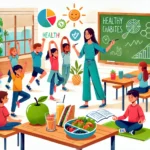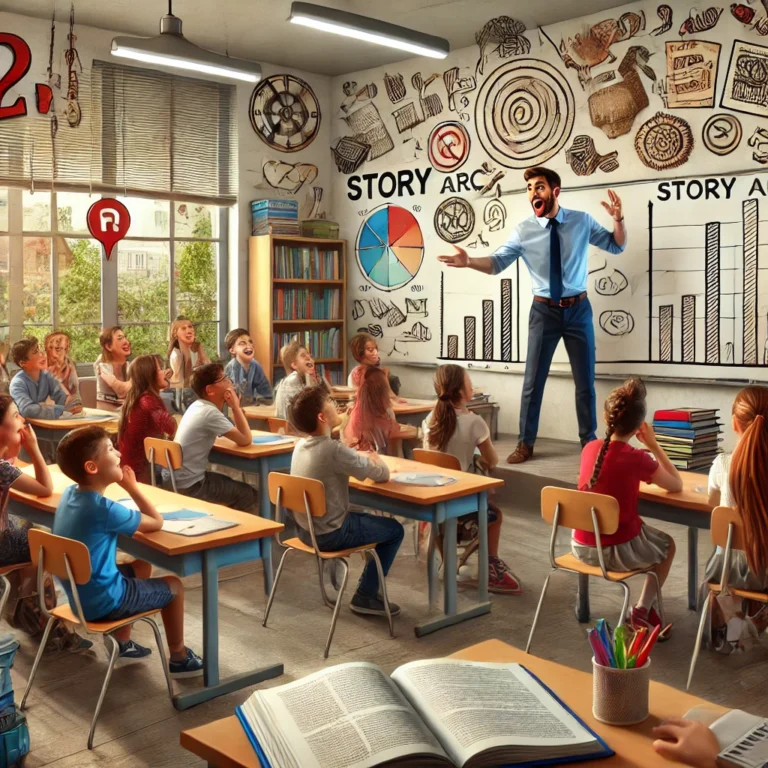Storytelling is a powerful tool in education, capable of transforming ordinary lessons into memorable experiences. By incorporating storytelling techniques into their teaching, educators can engage students’ imaginations, make complex concepts more relatable, and enhance retention. This blog will explore various storytelling strategies that teachers can use to bring their lessons to life, whether in history, science, language arts, or any other subject. From using personal anecdotes to crafting fictional tales, storytelling can make learning both enjoyable and impactful.
1. The Power of Personal AnecdotesOne of the simplest yet most effective storytelling techniques is sharing personal anecdotes. When teachers relate a personal experience relevant to the lesson, it helps students connect with the material on a deeper level. Personal stories can humanize the teacher, making the content more relatable and engaging. For example, a teacher might share a story about a historical event that affected their family, helping students see the personal impact of larger historical narratives.
2. Creating Fictional ScenariosCrafting fictional scenarios that illustrate key concepts can make abstract ideas more concrete. For instance, a math teacher might create a story about a character facing a problem that requires mathematical reasoning to solve. This technique helps students visualize and understand the application of concepts in real-world situations. Fictional storytelling can be particularly effective in subjects like science and social studies, where complex ideas can be explored through imaginative narratives.
3. Integrating Cultural and Folklore StoriesIncorporating stories from different cultures and folklore can enrich the learning experience and provide diverse perspectives. Teachers can use these stories to introduce new topics, explain moral lessons, or explore cultural practices. This not only makes the lesson more engaging but also promotes cultural awareness and sensitivity among students. For example, a folklore story from a specific culture can be used to teach a lesson about ethics or community values.
4. Using Multimedia to Enhance StorytellingMultimedia elements like videos, animations, and sound effects can bring stories to life in the classroom. Teachers can use multimedia to create immersive storytelling experiences that capture students’ attention and make the lesson more dynamic. For example, an animated video about a scientific process can make the content more accessible and engaging for visual learners. Incorporating different media formats can cater to various learning styles and keep students interested.
5. Encouraging Student StorytellingEncouraging students to create and share their own stories can deepen their understanding of the material and foster creativity. This could involve writing assignments, group projects, or oral presentations where students develop narratives related to the lesson content. By becoming storytellers themselves, students take ownership of their learning and develop critical thinking and communication skills. For example, students might create a story that explains a historical event from a unique perspective.
6. Building Lessons Around Story ArcsStructuring lessons around classic story arcs—such as introduction, conflict, resolution—can make the content more engaging and easier to follow. This approach can be applied to subjects like history, where events can be framed as stories with characters, challenges, and outcomes. By organizing lessons as narratives, teachers can maintain students’ interest and help them retain information more effectively. For instance, a lesson on the Civil Rights Movement could be presented as a story of struggle and triumph.
7. Connecting Stories to Real-World IssuesLinking stories to current events or real-world issues can make lessons more relevant and meaningful. Teachers can draw parallels between historical stories and modern-day challenges, helping students see the continuity of human experiences. This technique not only engages students but also encourages them to think critically about the world around them. For example, a lesson on environmental conservation could be tied to a story about a community’s efforts to protect their natural resources.
8. Utilizing Digital Storytelling ToolsDigital storytelling tools, such as story mapping software or interactive timelines, can enhance the storytelling experience in the classroom. These tools allow teachers and students to create rich, multimedia narratives that can be shared and explored online. Digital storytelling can be particularly effective in project-based learning, where students can collaborate on creating digital stories that demonstrate their understanding of a topic. For example, students might create a digital timeline that tells the story of a scientific discovery.
9. Role-Playing and DramatizationRole-playing and dramatization are powerful storytelling techniques that involve students in the narrative process. By acting out scenes from history, literature, or even scientific processes, students can gain a deeper understanding of the material. Role-playing allows students to embody characters and explore different perspectives, making the lesson more immersive and memorable. For instance, students might reenact a historical debate, bringing the arguments and emotions of the time to life.
10. Incorporating Storytelling in AssessmentsStorytelling can also be integrated into assessments, allowing students to demonstrate their understanding in creative ways. Instead of traditional tests, teachers might ask students to write a short story or create a storyboard that explains a concept covered in class. This approach not only assesses students’ knowledge but also encourages them to think critically and express their ideas creatively. For example, a science assessment might involve writing a story about a scientific principle as experienced by a character.
Conclusion
Storytelling is a versatile and effective teaching tool that can enhance student engagement, comprehension, and retention across all subjects. By incorporating storytelling techniques into their teaching, educators can create a more dynamic and memorable learning experience for their students. Whether through personal anecdotes, fictional scenarios, or multimedia storytelling, the power of narrative can make education more impactful and enjoyable.


